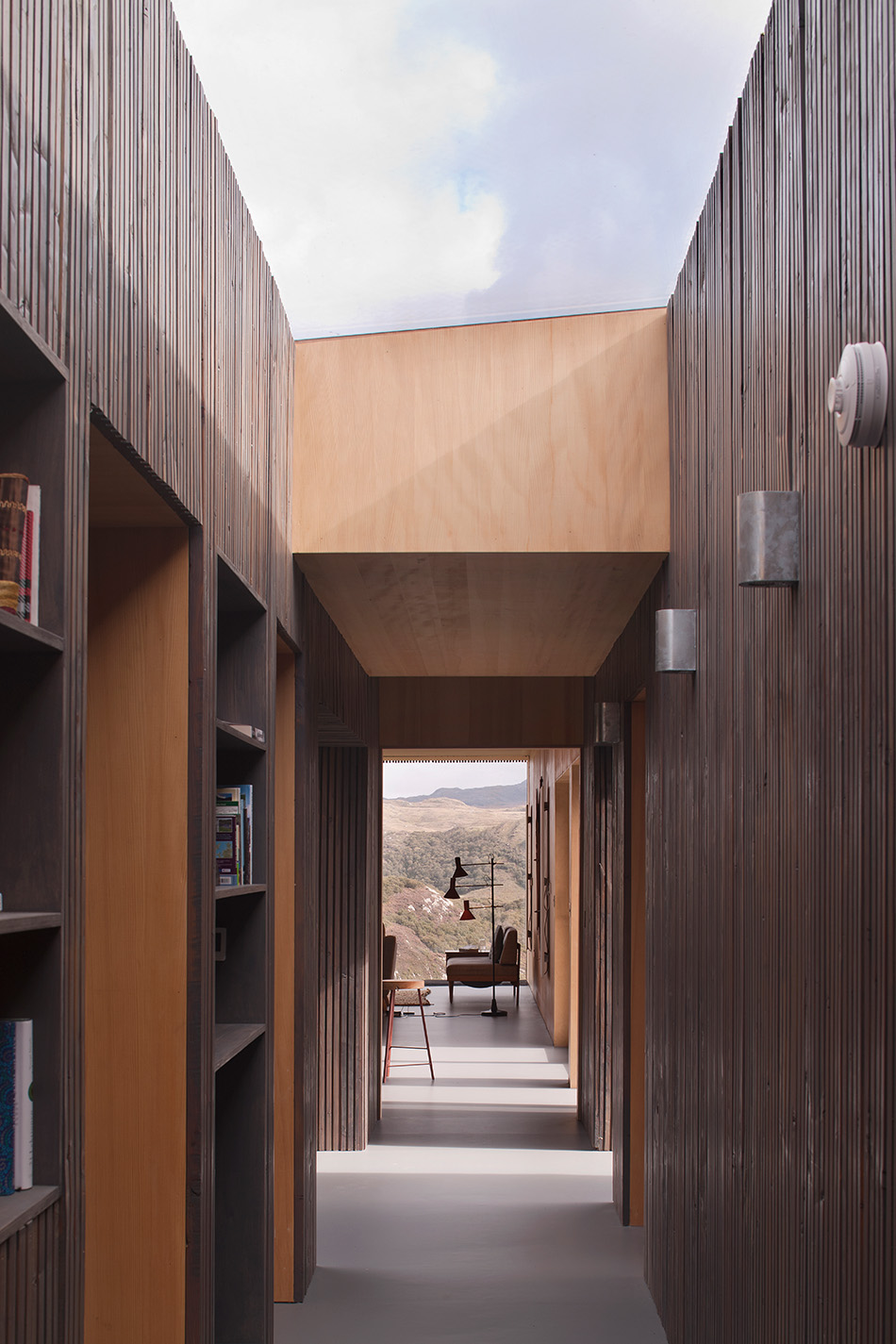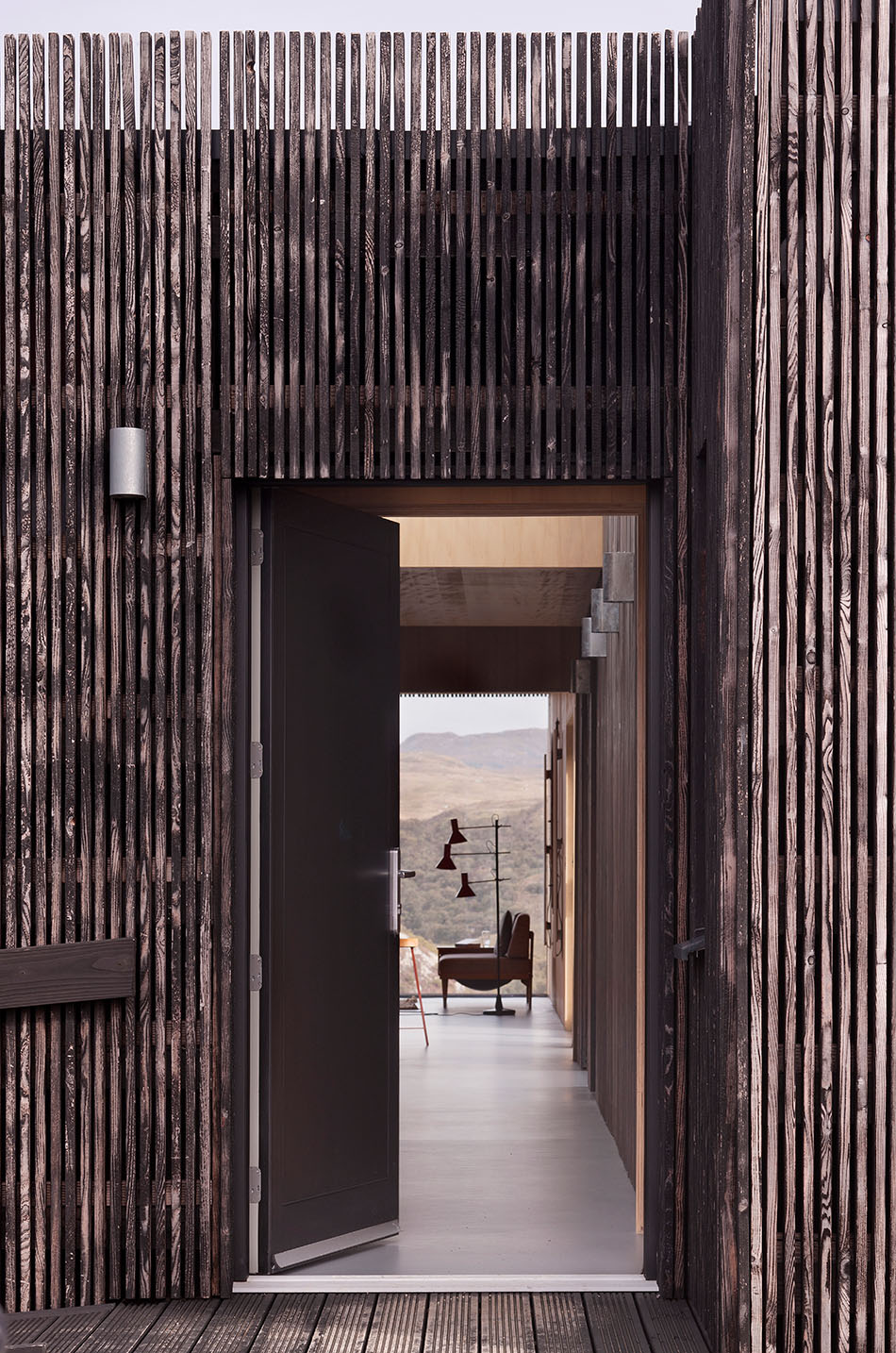An Cala: Best Use of Timber Awards Winning Project 2021
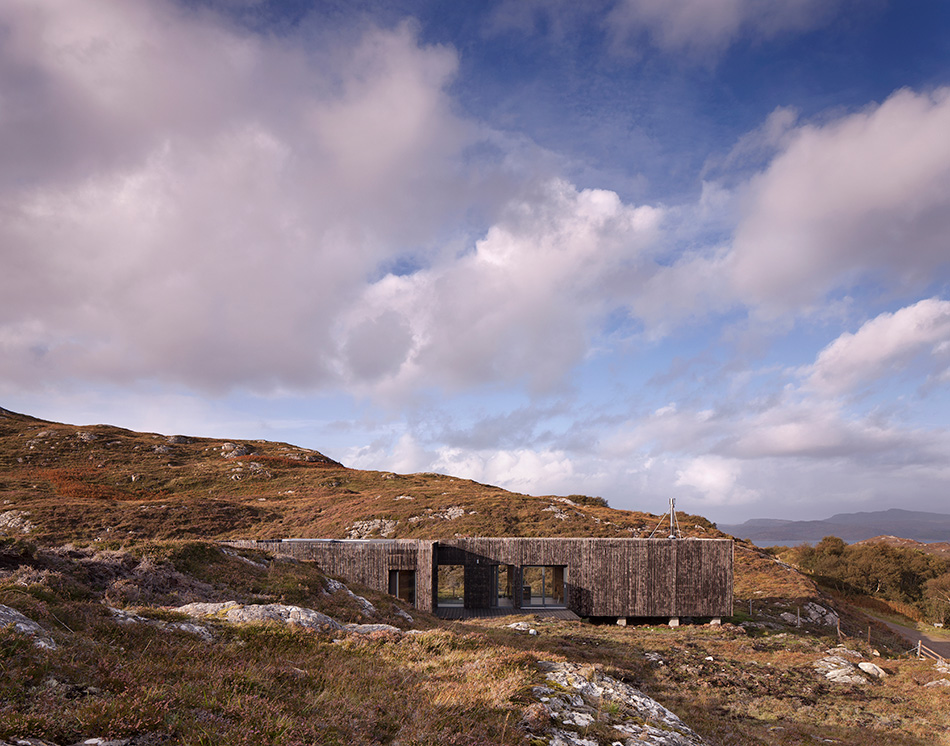
The Scottish Forestry/ Wood for Good Award, a special category award of the Royal Incorporation of Architects in Scotland’s (RIAS) Awards, has this year been won by An Cala a new build modular house in Sutherland designed by Mary Arnold- Forster Architects.
The project, a modest sized two-bedroom home, is seen as a key exemplar in terms of demonstrating the potential of combining client driven design delivered via a low-impact and low-energy modular timber house model - using local industries and home-grown materials where possible.
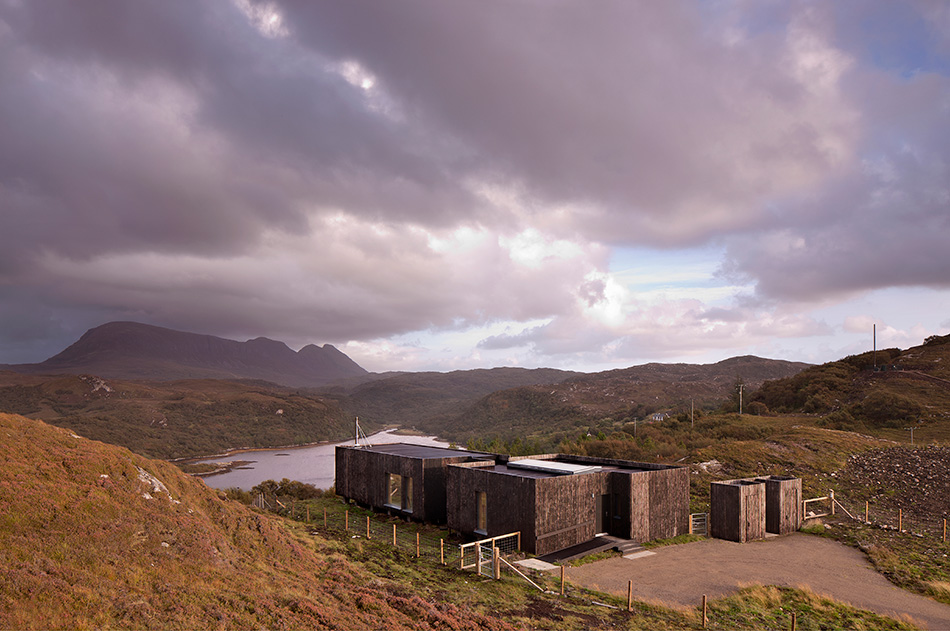
Located in a small area of croft land in remote Assynt, the plot was discovered by the clients, a young couple of business owners, during an online search. Originally looking for a property in the area, the couple was drawn to the site with the idea of building a kit house. However, a meeting with architect Mary Arnold-Forster would open up new possibilities.
“I spent two separate visits to Assynt to look at sites with the clients,” says Arnold-Forster. “I joined them on a couple of occasions and though we were beset by terrible weather, they were undeterred. It had been on the market for some time and hadn’t sold. The land that rises on either side of the site is characterised by rock, heather, peat and grass, and is in many ways entirely ordinary and typical to the area.”
The site
The site had planning permission for a 1½ storey house, a conventional white walled slate roof building, facing onto the road. “Instead, I suggested a low-slung single storey black clad house, located on the back of the site looking out to the view and turning its back on the road. In fact, the opposite of the planning permission that was in place.”
“I wanted to fit the building between two outcrops and avoid all rock breaking. The site had been identified with no reference to the topography, so I asked the surveyor to survey all the rocks on site as well as the contours,” continues Arnold-Forster. “I was keen to lift the building off the ground and make the ordinary landscape become extraordinary by framing intimate views of the site as well as the epic main views of Loch Nedd and Quinaig beyond. When you frame the rock, heather, and grass, it suddenly becomes this joyous picture.”
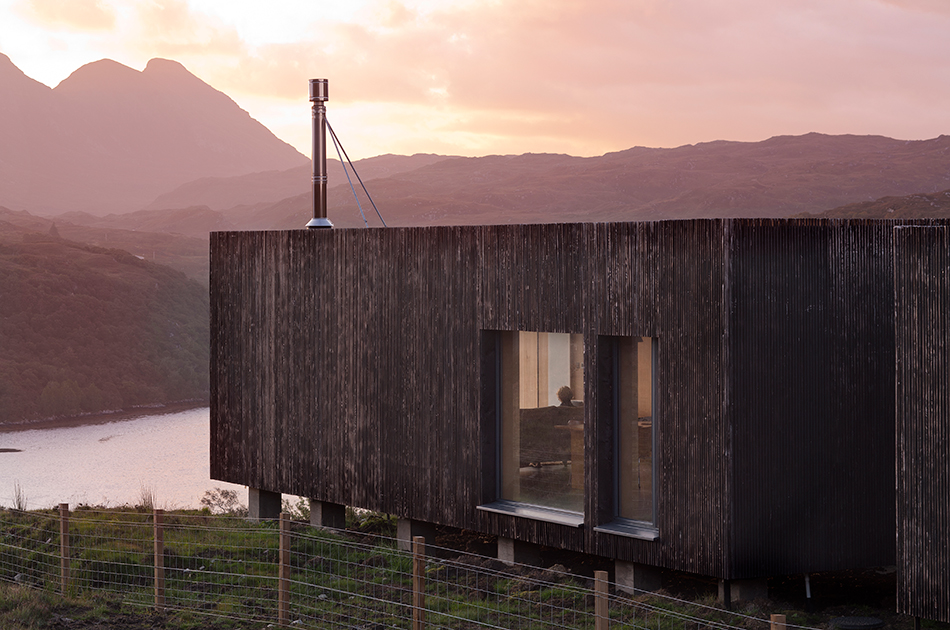
Procurement
The procurement method was as customised as the architectural approach to this remote site, reached via a winding road that dives and winds its way through empty moorland, alongside lochs and inlets. The desire for a building which steps through the landscape without any ground bearing slab, led to the suggestion by the architect of a direct collaboration with contractor Carbon Dynamic, a local company based out of a large factory at Invergordon near Inverness.
“Early in the process the clients visited the contractor Carbon Dynamic, who specialise in offsite, modular construction, and agreed to negotiate a contract with them directly. They essentially trusted me to negotiate a price rather than go out to competitive tender,” says Arnold-Forster.
“The logistics of delivery down a single-track road and the maximum size of the lorry bed (2750 wide) was the starting point for the form of the building. The first question I asked of Carbon Dynamic was what size of lorry could get down a single-track road,” says Arnold- Forster.
Following their purchase of the plot, the client’s brief was essentially for an eco-conscious and comfortable modern house, with lots of light, and taking advantage of the spectacular views. “We realised that the lay of the land wasn’t suited to a kit house, it wouldn’t have made the most of the views. Mary advised that there should be a light touch, so we were happy to go with her proposal,” they explain.
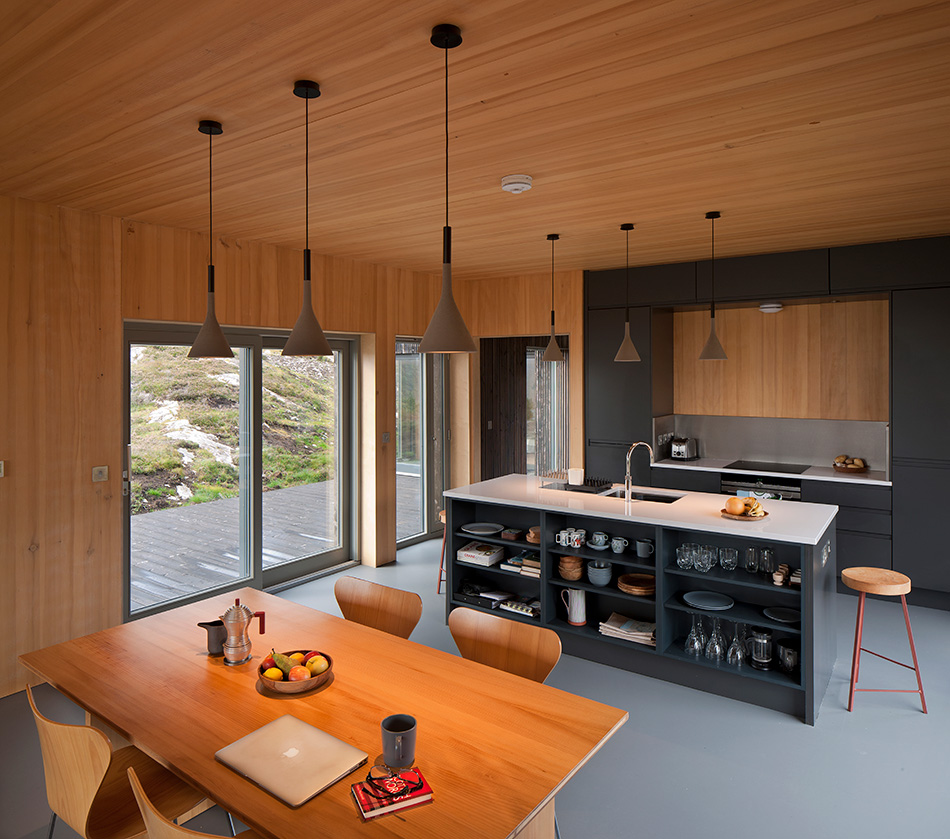
The build
Carbon Dynamic was responsible for all aspects of the engineering, building and exterior/interior finishes, and the design was developed during several visits to the factory of the architect and clients. At the outset the company also provided a Virtual Reality walk-through of the building that allowed the clients to envisage the experience of living in their new house. “VR allowed the clients to see the design develop, allowing them to contribute directly to any changes. Some clients struggle with architectural drawings, so this process was enlightening for both my clients and I,” says Arnold- Forster.
Local planners supported this contemporary but sensitive architecture by dint of its low lying and discreet form, and its resultant low impact on the landscape. “The building is set on little concrete piers, and in theory the building could be taken off these pads and built somewhere else,” says Arnold-Forster. “This is a demountable building. One of the advantages of using offsite construction is that you have more control over what you can achieve in terms of demountability.” Consideration of the building’s impact also led to the careful removal and reinstatement of the peat on the plot.
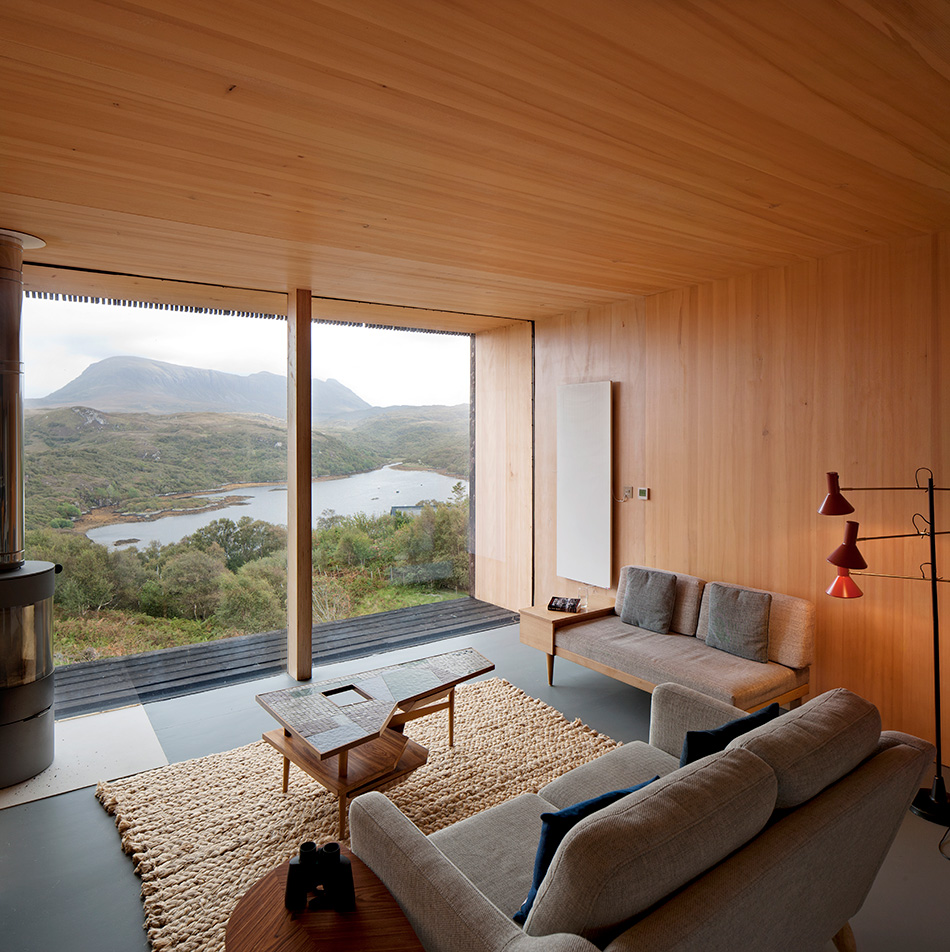
Essentially, the main on-site construction of the modular building took 4 days to complete. The 13 prefabricated transportable modules feature Douglas Fir-lined Cross Laminated Timber, with a wood fiber external insulation and a charred, thin and sometimes askew, larch rainscreen cladding – the architect’s interpretation of birch trees in winter. The rainscreen cladding can be taken off and repaired when necessary. These panels also cover the downpipes and gutters from the roof, creating a simple, streamlined exterior finish.
The robust and extremely energy efficient airtight building requires little in the way of heating – just a few panel heaters and a large wood burning stove. Solar gain heats the house via rooflights and large framed window facing the views.
The house is divided into 3 pods with a top lit corridor linking each one. The main living pod is made up of 5 units, with the master bedroom suite and utility comprising 4 units and remaining 3 units creating a spare bedroom and shower room with the glazed link between. “The corridor defines the 3 linked forms that are punctured by windows offering close portraits of rocks and heather. This journey then ends in a framed view of Loch Nedd and Quinaig beyond,” says Arnold- Forster. “I wanted to avoid a wall of glass but instead to frame the big view in two key rooms - the living space and the main bedroom. The transition from the intimate to the epic makes the ordinary, extraordinary.”
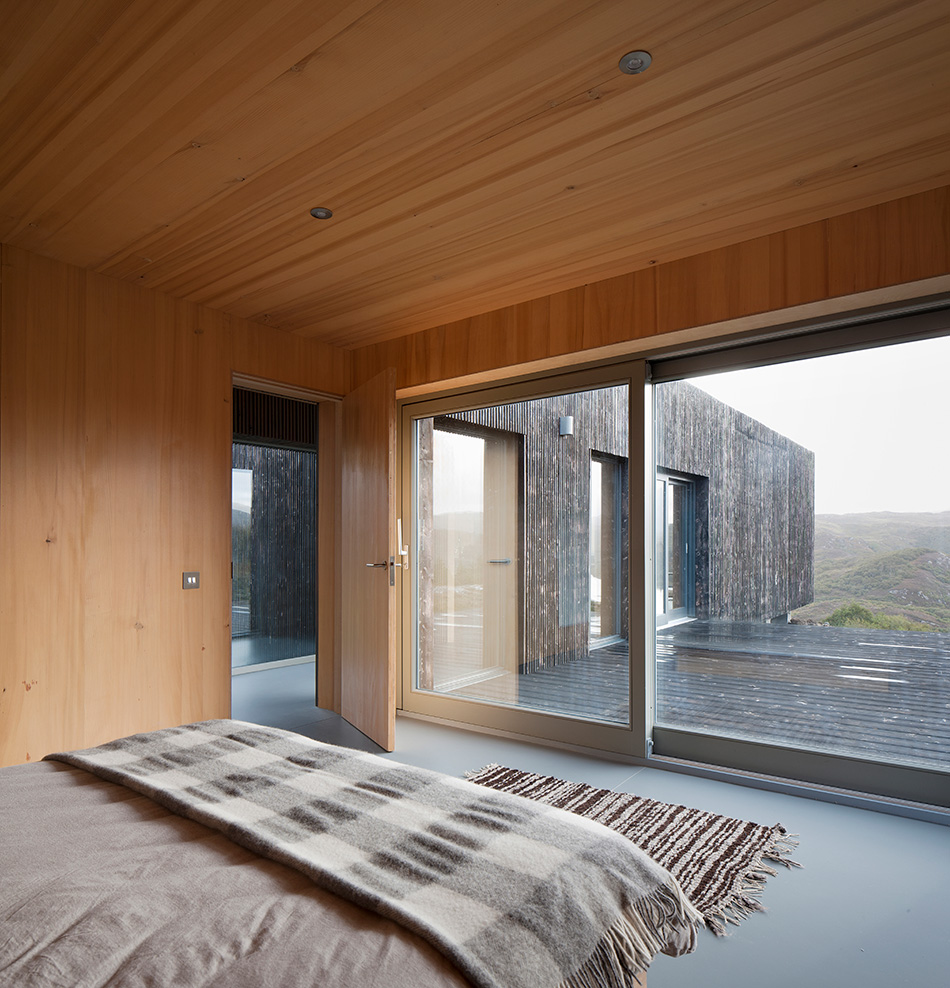
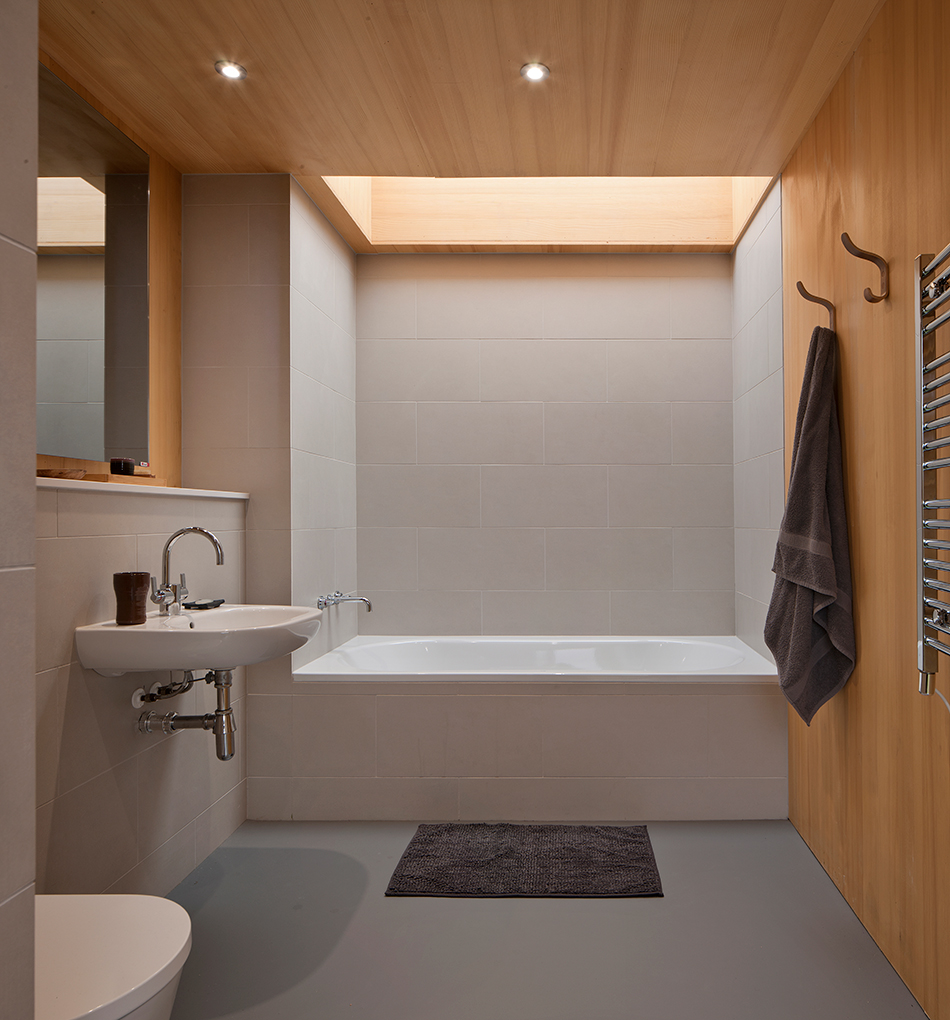
This aspect of harnessing the views has been particularly satisfying for the clients. “What Mary has created with the brief is very inspiring. The perspective of the main view looking over the mountain is entirely different from the living area and bedroom, even though they are adjacent to each other. The bedroom is set back a little and has a lower ceiling, almost like a cabin, so the view is not so imposing, it feels a bit more distant. Whereas the ceiling in the living room is much higher than the bedroom - almost like a New York loft style - and this view makes you gasp as you see it in all its glory.”
Internally the finishes have been kept simple and unfussy in keeping with the overall ethos of the design. “I’m interested in spending money on the fabric of the building rather than gadgets,” says Arnold-Forster. The fir-lined walls are augmented with elements of the vertical larch cladding from the building’s exterior. The dining table was even constructed by Carbon Dynamic joiners, using the same Douglas fir as the wall linings.
“We think the house is designed so perfectly for living,” conclude the clients. “We do get some storms…we can hear the wind roar outside, but you do feel cocooned and insulated from the outside world. Yet on sunny days you can open the sliding doors and you’re at one with nature.”
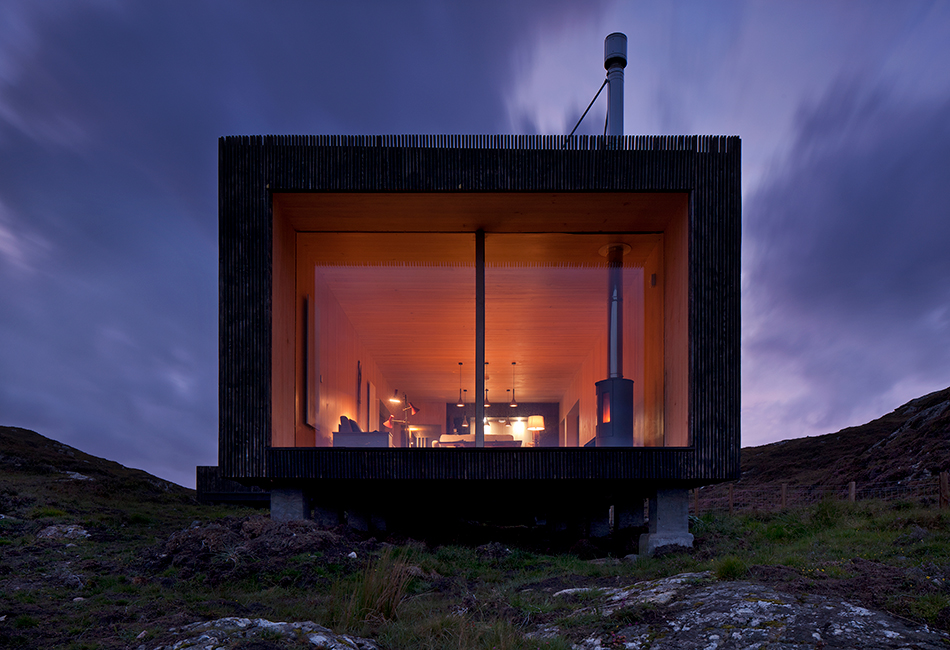
Award
Presenting An Cala with the Scottish Forestry/Wood For Good Award, RIAS President Christina Gaiger PRIAS said: “All credit to Mary Arnold-Forster Architects and their clients for daring to do something different. The result is outstanding – a truly beautiful home that demonstrates the incredible versatility and environmental benefits of building with wood. An Cala is a real exemplar – demonstrating that low-energy and low-impact timber construction will be fundamental as we tackle the climate emergency, without any compromise in terms of architectural quality or comfort.”
The possibilities and potential of the offsite construction model used in An Cala is something Mary Arnold-Forster would like to see explored and embraced in future. “I would like to see projects like An Cala kick-starting a domestic CLT industry in Scotland. CLT is a great product and the cost is on a par with other construction. Rural Scotland is crying out for this and the offsite element also makes sense in cities, as it’s so quick to construct. But at the moment we still have to import it. Hopefully projects like this will bring attention to this. Let’s have a CLT industry…”
Project: An Cala
Location: Assynt, Sutherland
Square metre: 150 approx
Date start and finish: On site Sept 2017 to June 2018 though mostly built off site prior to delivery.
Architect: Mary Arnold Forster http://maryarnold-forster.co.uk/
Clients: Private
Short project description: A CLT modular build – assembled in factory in Invergordon and delivered and erected in Nov 2017 in 4 days.
Completed: June 2018
Main contractor: Carbon Dynamic (responsible for engineering, building and exterior/interior finishes) https://www.carbondynamic.com/
-Larch cladding and Interior Douglas Fir wall and ceiling linings, doors
-Russwood https://www.russwood.co.uk/
-Grey Linoleum – Forbo Nairn https://www.forbo.com/flooring/en-uk/
-Windows – Treecraft https://www.treecraft-woodwork.com/


